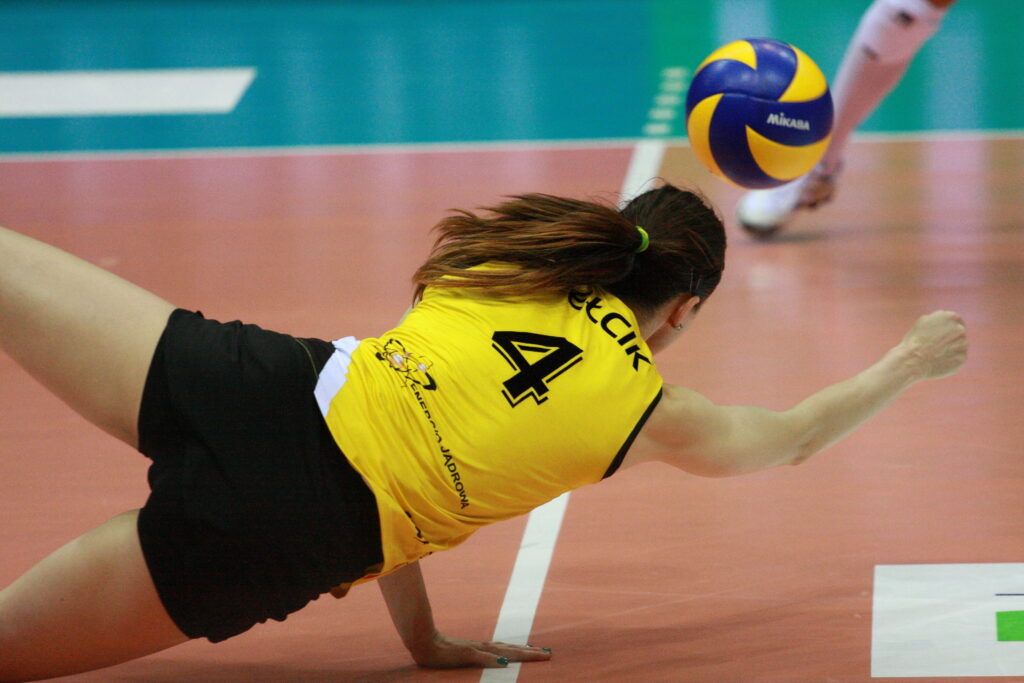Libero in Volleyball: A Definite Guide
learn, play, dominate:
your volleyball journey starts here.
Libero Explained: The Master of Defense
Libero Meaning
The libero, meaning “free” in Italian, is a unique and vital position in volleyball. This comprehensive guide dives deep into everything you need to know about liberos, from their role to rotations and training tips.
What’s a Libero?
A libero is a specialized defensive player whose primary focus is receiving serves, digging powerful attacks, and ensuring smooth ball control. Unlike other players, they operate exclusively in the back row and can substitute freely for any back-row teammate without counting towards a team’s substitution limit. This allows for constant defensive optimization based on the opponent’s attack strategy.
Why is there a Libero in Volleyball?
The libero position was introduced in 1998 to enhance the sport’s dynamism. Here’s why:
- Lengthened Rallies: By allowing teams to field their best defensive player consistently, rallies became longer and more exciting for viewers.
- Specialization: Shorter players with exceptional passing and digging skills could excel in a dedicated defensive role.
How to Pronounce Libero
The pronunciation of “libero” can vary slightly depending on accent, but here are two common ways:
- Lee-beh-roh (most common)
- Lib-er-oh
The Libero: A Master of Defense and Communication
The libero is the anchor of a team’s defense, specializing in a range of skills that keep the ball in play and set up the offense for success.
Mastering the Back Row
- Exceptional Passing and Digging: Liberos are often the team’s best passers, utilizing a solid platform technique and lightning-fast reflexes to handle powerful serves and control even the fiercest attacks.
- Agile Movement: Covering the back row effectively requires quick footwork and the ability to anticipate the opponent’s attack. Liberos constantly move and react, ensuring they’re in the optimal position to make a play.
- Communication and Leadership: A libero’s role extends beyond individual skills. They act as the defensive leader, constantly communicating with teammates, directing them for optimal positioning, and keeping everyone on the same page defensively.
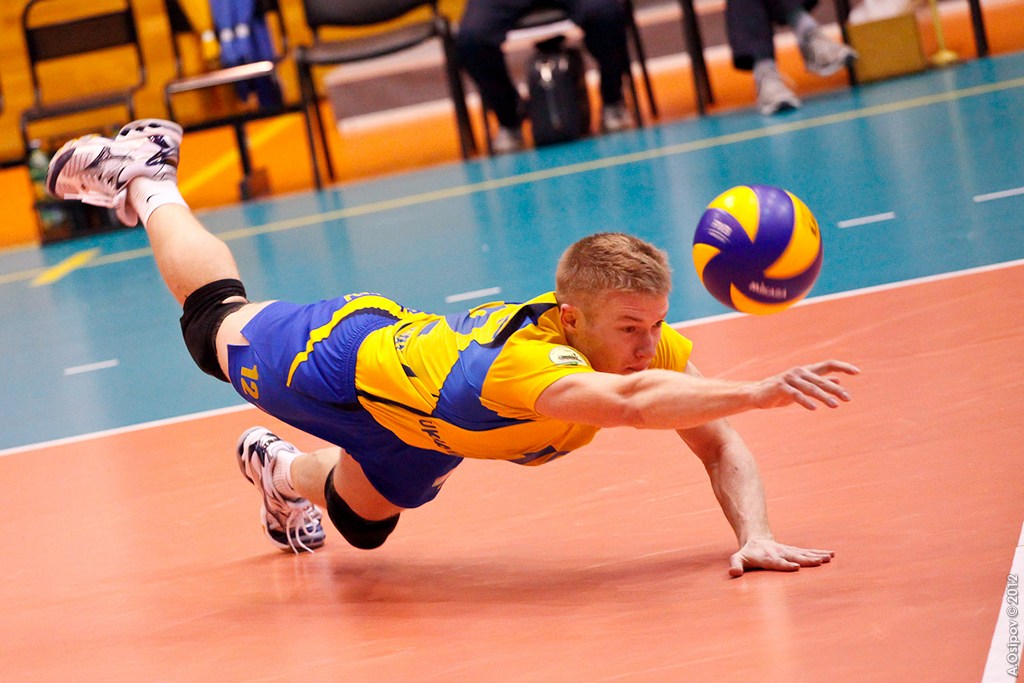
Focus on Defense
Focus on Defense
Libero Rules: Understanding the Limitations
Standing Out: The Libero’s Different Jersey
The libero wears a contrasting jersey color compared to their teammates. This distinct color makes it easy for referees to track substitutions and ensures the libero doesn’t accidentally participate in actions restricted to them (like serving or attacking above the net).
Restrictions
While a libero brings immense defensive value, certain rules govern their actions:
- No Serving or Attacking in Front Row: Liberos cannot serve or attack the ball above the net when they are in the front row.
- Setting Restrictions:
- Front Zone: If a libero sets the ball in the front zone (above the attack line) using a finger pass (set), the attacker must hit the ball below the net (a “soft hit”).
- Back Row: However, liberos can jump set the ball from behind the 3-meter line (back row). In this case, the attacker can spike the ball normally.
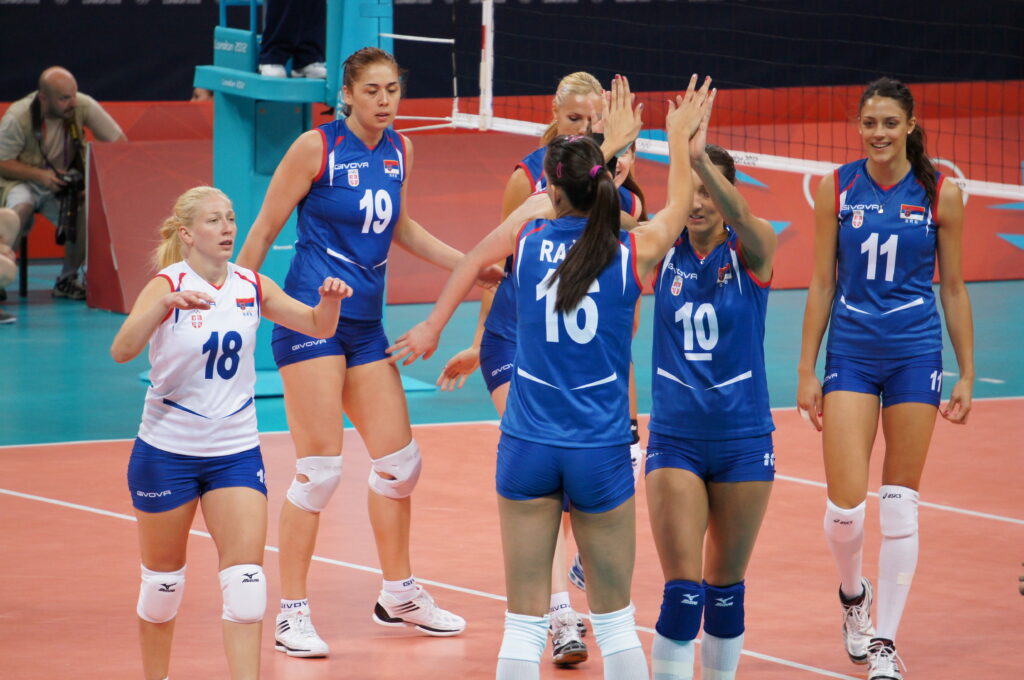
Libero Jump Set
The libero jump set is a unique and strategic offensive option available to liberos. Here’s the key point:
- Legal Takeoff: As long as the libero’s takeoff for the jump set happens entirely behind the 3-meter line (completely in the back row), they are allowed to complete the setting motion while entering the front zone during the jump.
This allows liberos to utilize their vertical jump to set the ball from a higher point, potentially creating unexpected setting angles and confusing the opposing team’s blocking strategy.
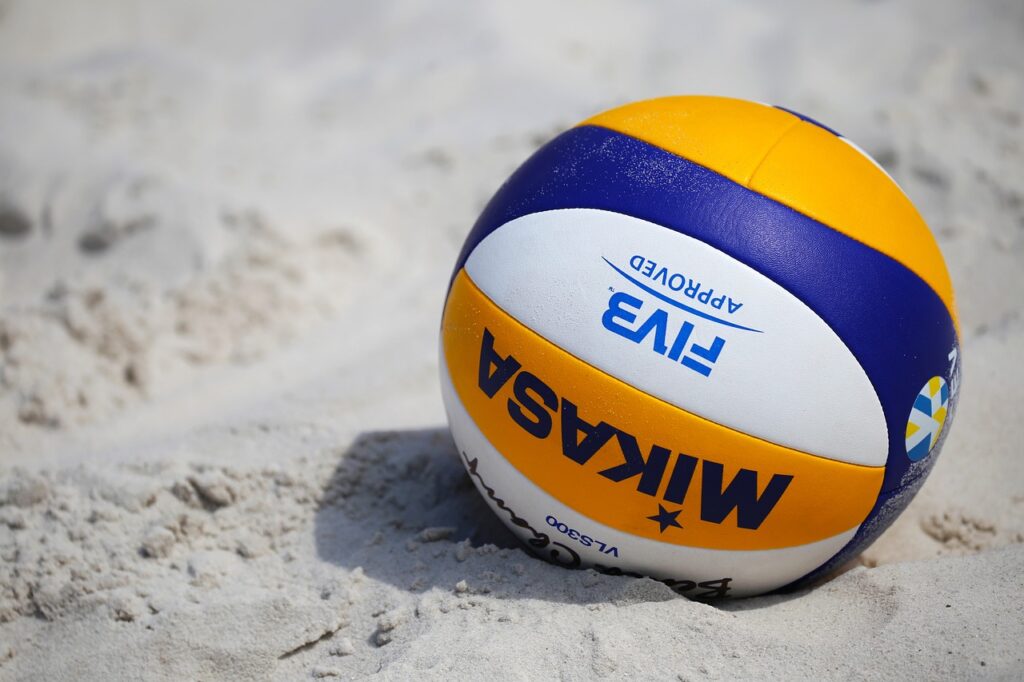
Libero Training: Building a Defensive Wall
The libero is the heart of a team’s defense, and becoming a top-notch libero requires dedication and consistent training. Here’s a deep dive into drills and exercises, categorized by solo and partner activities, to elevate your game
Solo Drills: Honing Technique on Your Own
Passing Drills
- Target Practice: Set up markers at various heights and distances on a wall. Practice throwing a ball against the wall and receiving the rebound with proper platform technique, focusing on accuracy and control.
- Wall Passing: Utilize a wall as your partner. Throw the ball against the wall with varying speeds and spins, focusing on controlling the rebound and building consistency in your passing form.
Digging Drills
- Reaction Ball Drills: Invest in a reaction ball that bounces unpredictably. Practice reacting quickly and digging the ball with proper platform technique as it bounces off the wall or floor. This drill hones your reaction time and ability to adapt to unexpected ball movements.
Movement and Agility Drills
- Lateral Shuffles: Focus on quick, explosive lateral shuffles back and forth along designated lines or cones, mimicking back-row movement.
- Box Jumps: Develop explosive jumping power for those high digs. Start with lower heights and gradually increase as you gain strength. You can utilize a sturdy step or platform for this exercise.
- Bodyweight Exercises: Focus on exercises that improve core strength, stability, and explosiveness, all crucial for libero play. Exercises like squats, lunges, planks, and push-ups are excellent choices.
Partner Drills: Sharpening Skills Together
Passing Drills
- Serve Reception Partner Drill: Work with a partner who alternates strong serves with varying speeds and spins. Practice receiving each serve with proper platform technique.
- Two-Person Wall Passing: Stand side-by-side with a partner facing a wall. Take turns throwing the ball against the wall and receiving the rebound, focusing on communication and passing accuracy.
Digging Drills
- Two-Person Digging Drill: Stand side-by-side with a partner and have a coach or teammate spike the ball between you. This drill hones communication and coordination while digging.
- Partner Spike Simulation: Have your partner toss the ball and simulate different spiking scenarios. Practice reading their toss and body language to anticipate the spike location and perform digs with proper technique.
Communication and Leadership Drills
- Mirror Drill: Stand facing a mirror with your partner and practice calling out plays as if directing teammates. This helps build confidence and clarity in communication.
- Role-Playing Scenarios: Simulate game situations with your partner. Take turns playing the role of the libero and call out defensive plays based on a pre-determined opponent’s attack strategy.
Remember: Consistency is key. Dedicate time daily or several times a week to work on these drills. As your skills improve, gradually increase the difficulty to keep challenging yourself. With focused training and dedication, you’ll be well on your way to becoming a dominant libero on the court.
The Libero’s Secret Weapon: The Split Step
The split step, a fundamental movement used in many sports, is particularly crucial for liberos in volleyball. It’s a dynamic technique that allows for explosive movement and quicker reactions, making the libero a defensive powerhouse.
What is the Split Step?
The split step is a preparatory movement that pre-loads your muscles for explosive action in any direction.
Here’s how it works:
- Preparation: As the opponent prepares to serve or attack, the libero adopts a balanced athletic stance with knees slightly bent.
- Push-Off and Split: Just before the opponent makes contact with the ball (serve or spike), the libero pushes off the ground with both feet simultaneously.
- Landing: The feet land slightly apart, with one foot slightly forward, creating a split stance. The body weight remains slightly forward, ready for quick movement in any direction.
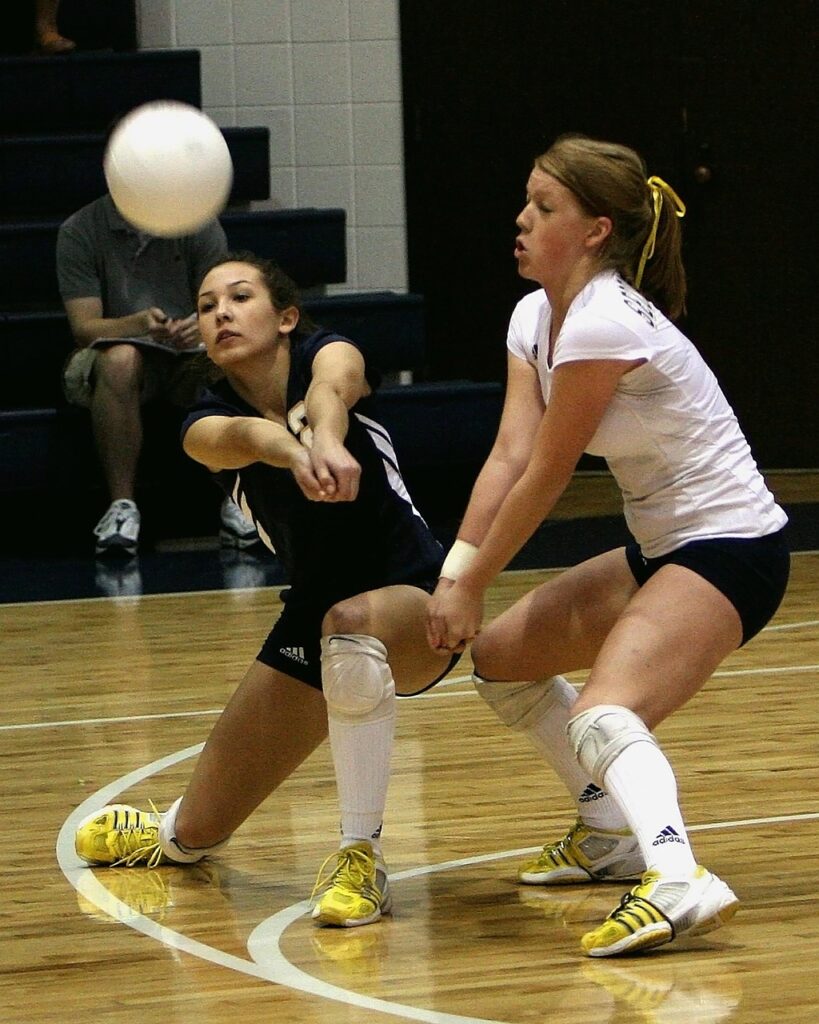
Benefits of the Split Step for Liberos
- Improved Reaction Time: By pre-loading the muscles, the split step allows for quicker response to the ball’s trajectory after a serve or attack.
- Enhanced Agility: The split stance facilitates explosive movements in any direction, allowing the libero to react to unexpected shots and cover a wider area of the back row.
- Balanced Stance: The split step ensures the libero remains balanced and ready to react, preventing them from being flat-footed and off-guard.
Mastering the Split Step
- Practice Makes Perfect: Integrate split step drills into your regular training regimen. Start slowly, focusing on the proper form and timing. Gradually increase the speed and practice reacting to simulated serves and attacks.
- Focus on Timing: The key to a successful split step is timing it right. Push off just before the opponent makes contact with the ball, not before they initiate the serve or swing.
- Footwork: Ensure your feet land slightly apart after the push-off, with your weight slightly forward for optimal balance and mobility.
When mastered, the split step becomes an automatic response for liberos. By incorporating this technique into their movements, liberos become more effective in receiving serves, digging powerful attacks, and ultimately solidifying their team’s defense.
The Libero Serve: A Strategic Twist (US High School Only)
While the “no serve” rule is a cornerstone of libero limitations worldwide, there’s a unique exception in US high school volleyball governed by the National Federation of State High School Associations (NFHS). This exception adds a layer of strategic intrigue for coaches.
The “Libero Replacement” Opportunity
Under NFHS rules, a libero can serve once per set under a specific circumstance:
- Replacing a Player in Position 1: If a libero replaces a teammate in the front-right position (position 1) during a rotation, they are allowed to serve immediately before returning to the back row. Essentially, the libero takes the place of the replaced player, who would have normally served.
Important Considerations
- This is a one-time opportunity per set. The libero cannot serve again throughout the set.
- This rule adds a strategic element for coaches. They can choose to utilize the libero’s serve for a specific tactical reason, such as targeting a weaker passer on the opposing team.
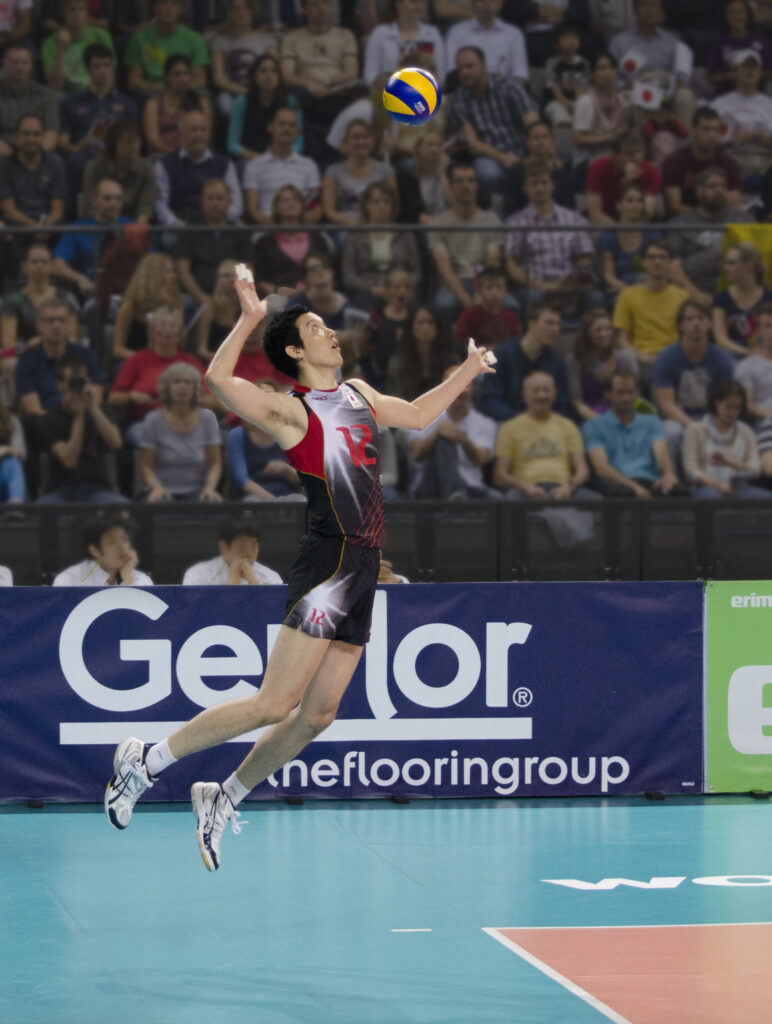
Remember: This exception is exclusive to US high schools under NFHS rules. In all other volleyball leagues and federations internationally, the libero remains strictly prohibited from serving.
The Perspective of a Setter: A Valuable Learning Experience
As a libero, it can be incredibly beneficial to try playing as a setter from time to time. Here’s why:
Understanding the Setter’s Role
Stepping into the setter’s shoes helps you comprehend the demands and responsibilities of this crucial position. You’ll gain a deeper appreciation for the setter’s role in organizing the team’s offense, setting up attacks, and facilitating teamwork.
Improved Communication
Playing as a setter enhances your communication skills. You’ll learn to effectively communicate with your teammates, calling for the ball, indicating desired sets, and adjusting to different situations on the court.
Enhanced Game Awareness
As a setter, you have a unique vantage point, overseeing the entire court. This perspective improves your game awareness, allowing you to anticipate plays, read the defense, and make informed decisions.
Developing Versatility
Learning to play as a setter makes you a more versatile player. You’ll develop a wider range of skills, including setting, digging, and blocking, which can be valuable in any position.
Building Empathy
Putting yourself in the setter’s shoes fosters empathy and understanding. You’ll gain a newfound appreciation for the challenges setters face and the importance of providing them with support and communication.
Appreciation for Good Receives
When teammates deliver accurate and consistent passes, the setter’s job becomes much easier, allowing them to focus on setting up effective attacks. On the other hand, poor receives force the setter to run after every ball, making it challenging to organize the offense and leading to disjointed play.
By playing as a setter occasionally, you’ll not only improve your volleyball skills but also develop a deeper understanding of the game and your teammates. It’s an enriching experience that can make you a more well-rounded player.
Learn from your coach and teammates!
Ask them for tips!
Don’t be afraid to seek advice and guidance from your coaches and more experienced teammates. They have been through it all and have much knowledge and experience to share. Ask specific questions about techniques, strategies, and game situations. They’ll be more than happy to help you improve your skills and become a better player.
Remember, volleyball is a team sport, and everyone has something to contribute. Listening to your coaches and teammates will help you gain valuable insights and grow as a player.
